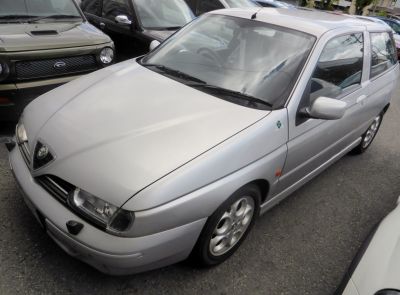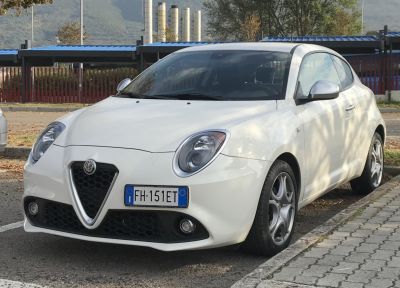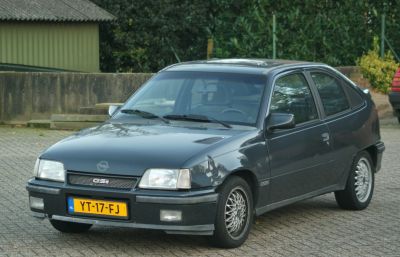 1984 Volkswagen Golf II (5-door) Dimensions, Size & Specs
1984 Volkswagen Golf II (5-door) Dimensions, Size & SpecsMeasurements of the 1984 Volkswagen Golf II, engineered for optimal performance and comfort
| Dimensions | |
|---|---|
| Length: | 3985 mm156.9 in13.1 ft |
| Width: | 1665-1680 mm65.6-66.1 in5.5-5.5 ft |
| Height: | 1405-1415 mm55.3-55.7 in4.6-4.6 ft |
| Ground Clearance: | 120 mm4.7 in0.4 ft |
| Trunk Capacity: | 345 liter12.2 cu ft |
| Trunk Capacity (Max): | 1145 liter40.4 cu ft |
| Weight Specifications | |
| Curb Weight: | 865-940 kg1907-2072 lbs |
| Maximal permitted Weight: | 1360-1430 kg2998-3153 lbs |
| Tire Specifications | |
| Rims Sizes: | 13-inch rims:
|
| Tire Sizes: |
|
The Volkswagen Golf II 5-door generation, produced between 1983 and 1987, is a hallmark compact hatchback known for its practical size and efficient use of space. Measuring 3985 mm (156.9 inches) in length, it offers a balanced footprint ideal for urban and suburban driving. The width ranges from 1665 mm to 1680 mm (65.6 to 66.1 inches), while the height varies between 1405 mm and 1415 mm (55.3 to 55.7 inches), giving it a compact yet comfortable cabin profile. With a curb weight between 865 kg and 940 kg (1908 to 2072 lbs), the Golf II maintains nimble handling and good fuel efficiency for its class. Its maximum weight capacity ranges from 1360 kg to 1430 kg (2998 to 3151 lbs), indicating a sturdy build capable of supporting passengers and cargo securely. The luggage compartment boasts 345 liters (12.2 cubic feet) of storage space, which expands significantly to 1145 liters (40.4 cubic feet) when the rear seats are folded down, enhancing its versatility for larger loads. The vehicle sits 120 mm (4.7 inches) above the ground, providing sufficient ride height for daily driving conditions. Standard wheel sizes include rims ranging from 5J x 13 to 5.5J x 13, fitted with tire options of 155/65 R13 and 175/70 R13, ensuring a stable and comfortable driving experience. Overall, the Volkswagen Golf II 5-door combines compact dimensions with practical features, establishing itself as a reliable choice in the hatchback segment during the mid-1980s.
Discover the standout features that make the 1984 Volkswagen Golf II a leader in its class
Have a question? Please check our knowledgebase first.
The Volkswagen Golf II 5-door model from 1984 measures 3985 mm (156.9 inches) in length, offering a balanced compact hatchback size. Its width ranges between 1665 mm (65.6 inches) and 1680 mm (66.1 inches), depending on the specific version or trim, which provides stability and interior spaciousness. The height varies from 1405 mm (55.3 inches) to 1415 mm (55.7 inches), contributing to a low, aerodynamic profile while still allowing comfortable headroom for passengers.
The curb weight of the 1984 Volkswagen Golf II 5-door ranges between 865 kg (1,907 lbs) and 940 kg (2,072 lbs), depending on the trim level and optional equipment. This lightweight design helps with fuel efficiency and agile handling. The maximum permissible weight is between 1360 kg (2,998 lbs) and 1430 kg (3,153 lbs), which includes passengers and cargo, underscoring the car’s suitability for various driving conditions while maintaining safety margins.
The Volkswagen Golf II 5-door from 1984 offers a practical luggage capacity of 345 liters (12.2 cubic feet) with all rear seats upright, enough for everyday errands and small trips. When the rear seats are folded down, the cargo space dramatically expands to 1145 liters (40.4 cubic feet), allowing for the transport of larger items or more luggage, making it highly versatile for both daily use and weekend trips.
Yes, the Volkswagen Golf II 5-door fits comfortably into a standard garage. With a length of just 3985 mm (156.9 inches) and width under 1680 mm (66.1 inches), it is well suited for typical residential garage dimensions. Its relatively low height of around 1415 mm (55.7 inches) also ensures adequate clearance in most garages, making parking and storage easy and hassle-free for urban and suburban owners.
Compared to the Golf I, the Golf II 5-door grew slightly in overall dimensions to improve interior space and comfort. The length increased to 3985 mm (156.9 inches), which is longer than the first generation by roughly 150-200 mm. Width and height both saw modest increases, with the width now up to 1680 mm (66.1 inches), offering added shoulder and cabin space. These dimensional enhancements contributed to more passenger comfort and better luggage capacity, marking a clear evolution over the original Golf.
The Volkswagen Golf II 5-door has a ground clearance of 120 mm (4.7 inches), which is typical for compact hatchbacks of its era. This moderate clearance enhances handling and aerodynamics while still providing enough height to navigate common road obstacles such as speed bumps and minor potholes. While not designed for off-road driving, this clearance gives the Golf II a balanced ride height for city and highway driving conditions.
The Golf II 5-door was typically equipped with 13-inch rims, available in sizes of 5J x 13 and 5.5J x 13, allowing for options in wheel width. Tire sizes include 155/65 R13 and 175/70 R13, providing a balance of ride comfort, grip, and fuel efficiency. These tire sizes were standard for compact hatchbacks at the time and contributed to the Golf II’s responsive and balanced road handling.
The Golf II 5-door stands out in the 1980s hatchback segment for its thoughtful balance of compact exterior dimensions and surprisingly roomy interior. While many competitors were similarly sized, the Golf II's increased length (3985 mm / 156.9 in) and flexible rear seating made it one of the more practical and versatile choices for families and daily commuters. Its luggage capacity and build quality often surpassed rivals, offering better space utilization and comfort in a comparably sized package.
The maximum authorized weight (gross vehicle weight) for the Volkswagen Golf II 5-door ranges between 1360 kg (2,998 lbs) and 1430 kg (3,153 lbs), depending on the specific model. This capacity includes the total weight of passengers, cargo, and the vehicle itself. Staying within this limit ensures the car maintains safe handling, braking, and structural integrity. Exceeding this weight could lead to compromised performance and increased wear on suspension components.
The Golf II 5-door brought several important improvements over the Golf I, including a more refined and boxier design that increased interior space without significantly enlarging the exterior footprint. This generation enhanced usability with larger rear doors for easier access, improved rear legroom, and a bigger luggage area when folding down seats. The Golf II also incorporated better safety features and upgraded suspension and chassis technology for improved ride comfort and driving dynamics, ensuring a more modern and versatile hatchback experience.
Discover similar sized cars.

| Production: | 1999-2000 |
|---|---|
| Model Year: | 1999 |
| Length: | 4061 mm159.9 in |
| Width: | 1712 mm67.4 in |
| Height: | 1431 mm56.3 in |

| Production: | 2016-2018 |
|---|---|
| Model Year: | 2016 |
| Length: | 4063 mm160.0 in |
| Width: | 1720 mm67.7 in |
| Height: | 1446 mm56.9 in |

| Production: | 2013-2016 |
|---|---|
| Model Year: | 2013 |
| Length: | 4063 mm160.0 in |
| Width: | 1720 mm67.7 in |
| Height: | 1446 mm56.9 in |

| Production: | 2008-2013 |
|---|---|
| Model Year: | 2008 |
| Length: | 4063 mm160.0 in |
| Width: | 1720 mm67.7 in |
| Height: | 1440-1446 mm56.7-56.9 in |

| Production: | 1984-1991 |
|---|---|
| Model Year: | 1984 |
| Length: | 3998 mm157.4 in |
| Width: | 1663-1669 mm65.5-65.7 in |
| Height: | 1400 mm55.1 in |

| Model Year: | 1979 |
|---|---|
| Length: | 3998 mm157.4 in |
| Width: | 1636 mm64.4 in |
| Height: | 1380 mm54.3 in |

| Production: | 2015-2017 |
|---|---|
| Model Year: | 2015 |
| Length: | 4050 mm159.4 in |
| Width: | 1985 mm78.1 in |
| Height: | 1455 mm57.3 in |

| Production: | 2015-2017 |
|---|---|
| Model Year: | 2015 |
| Length: | 4050 mm159.4 in |
| Width: | 1985 mm78.1 in |
| Height: | 1455 mm57.3 in |
